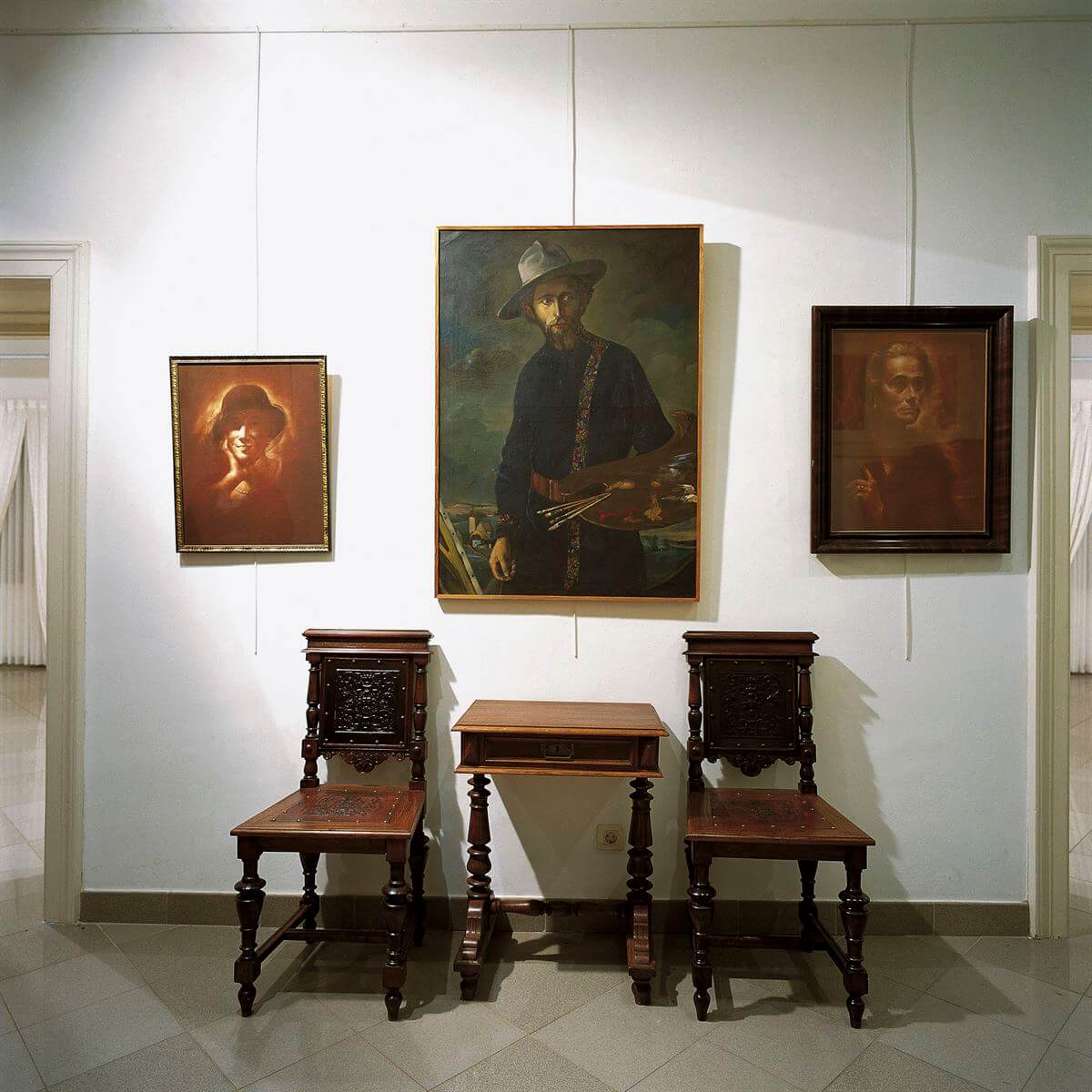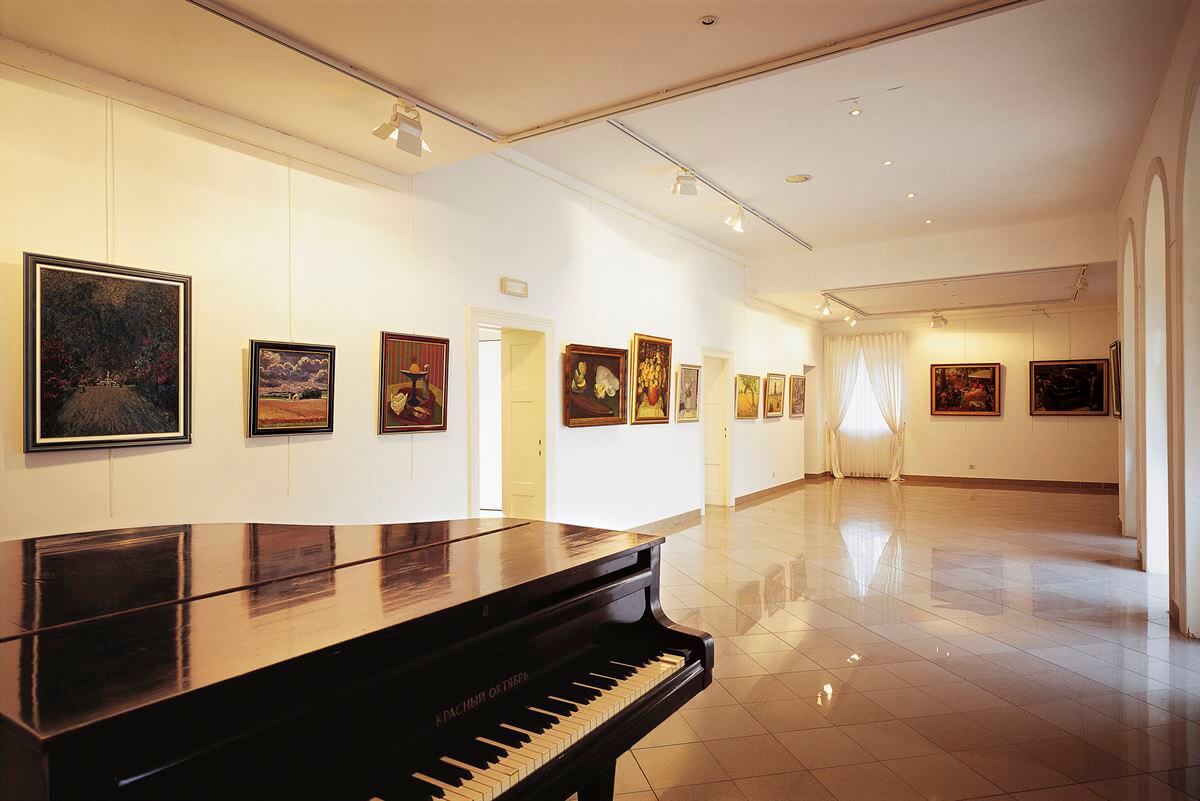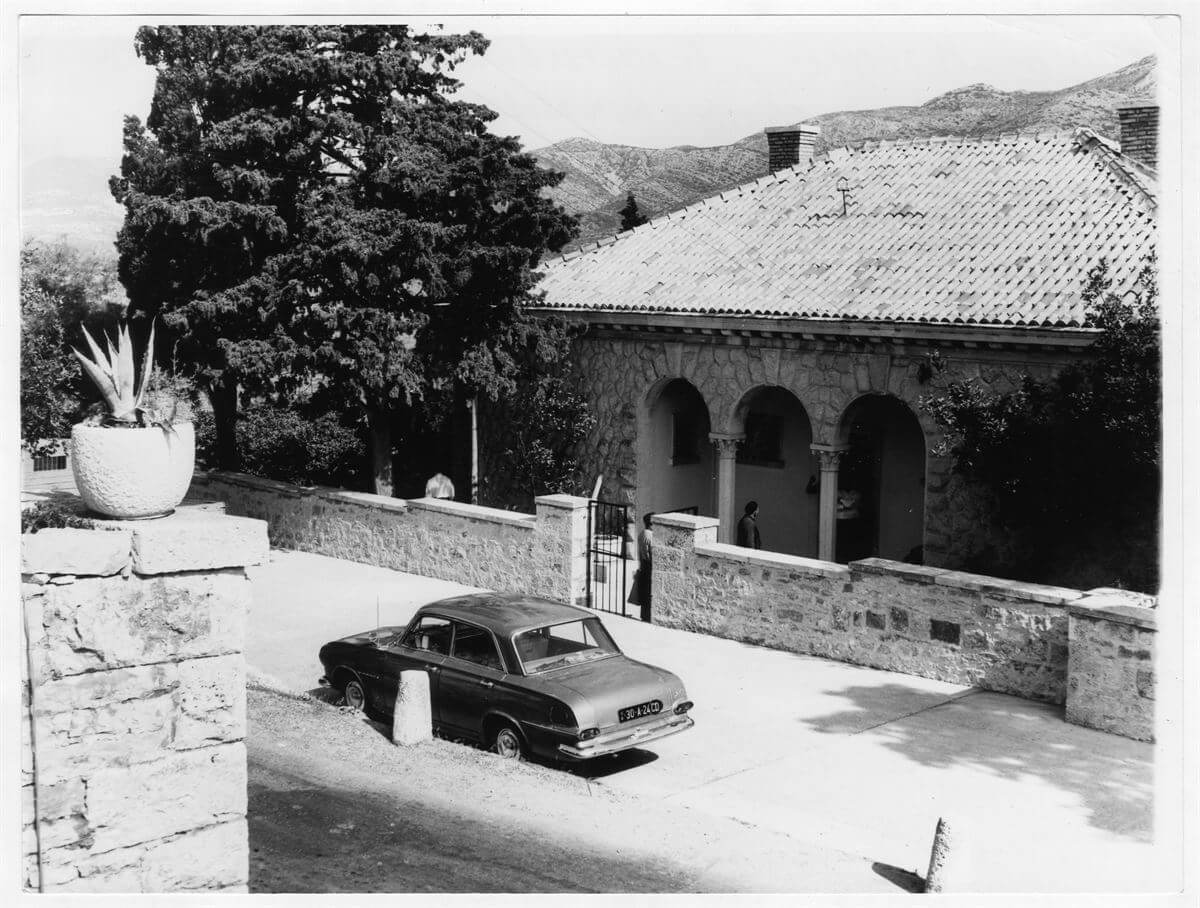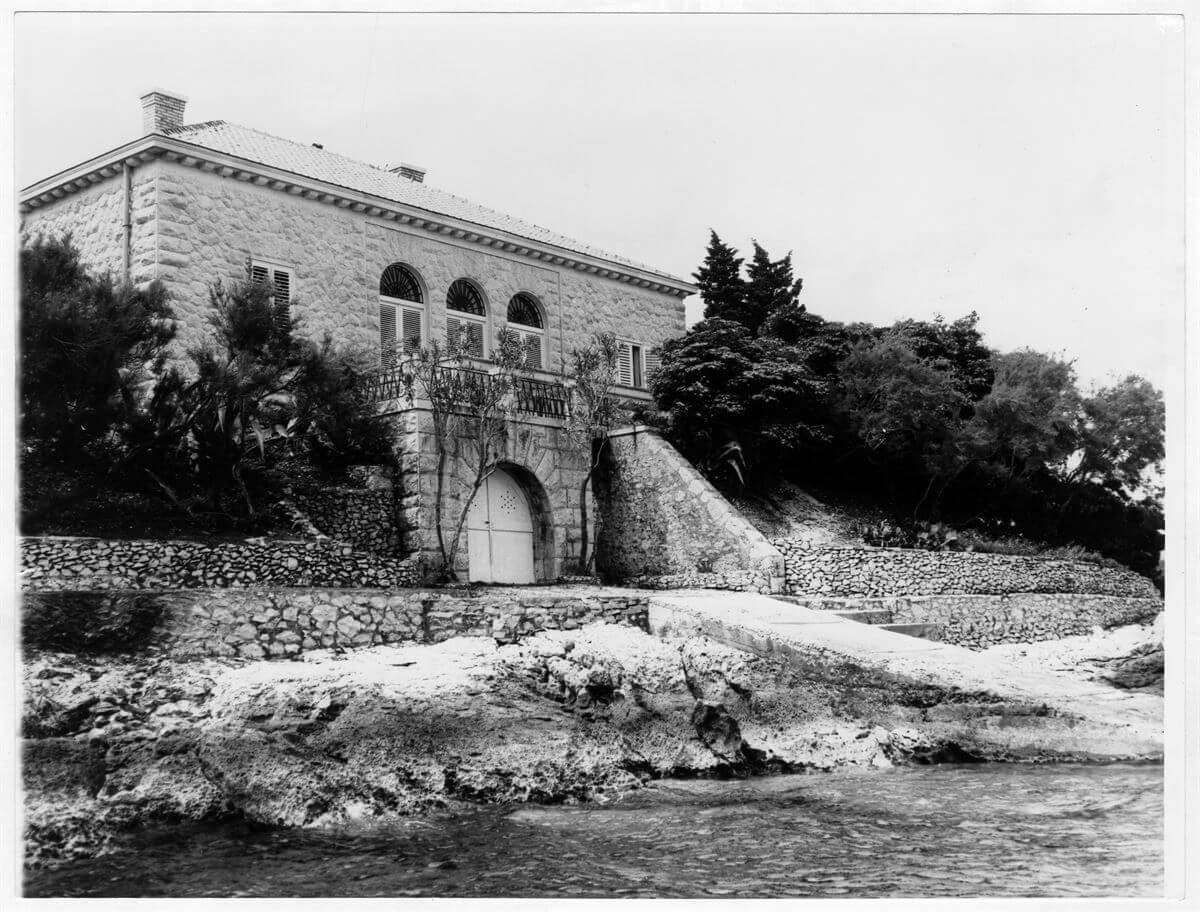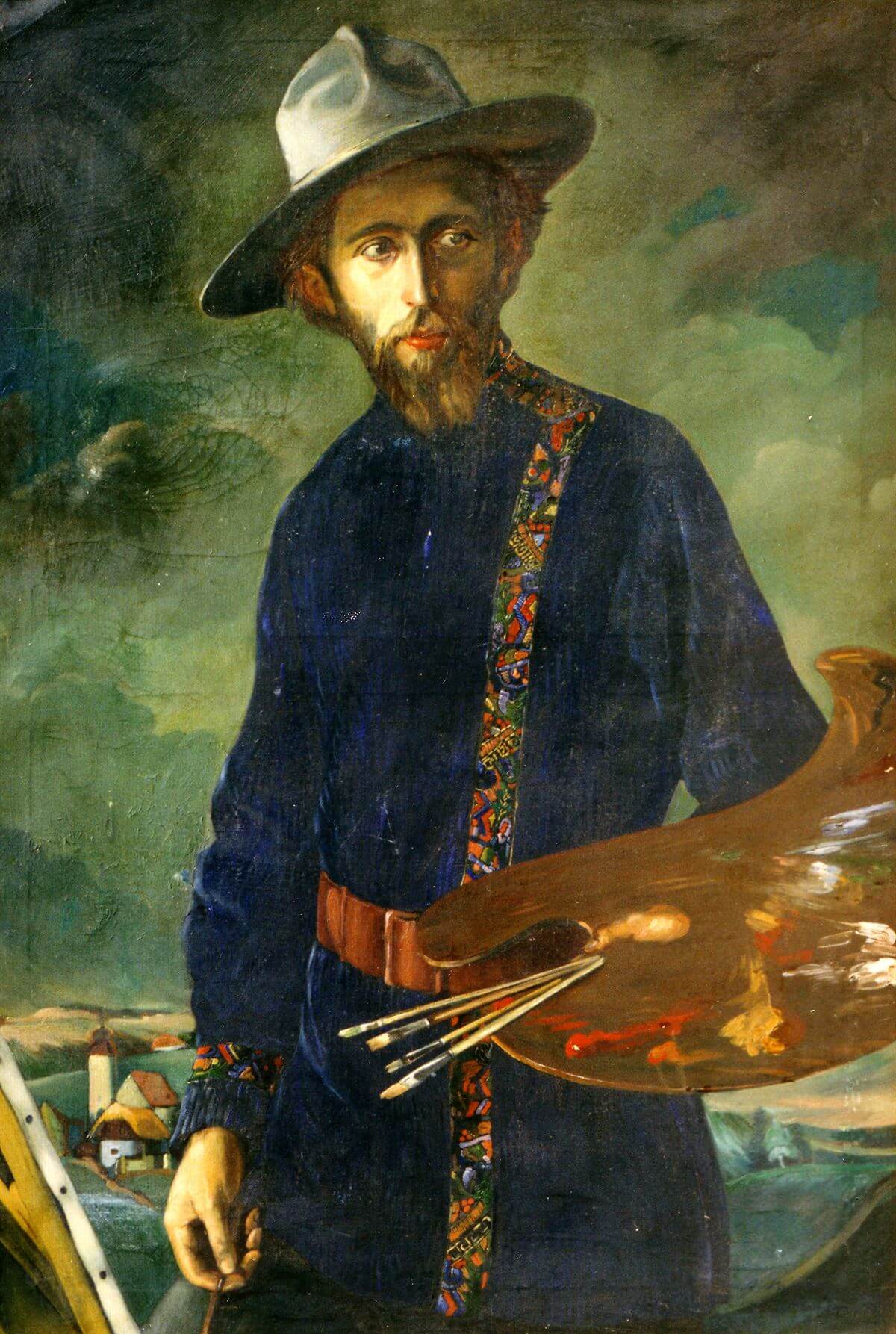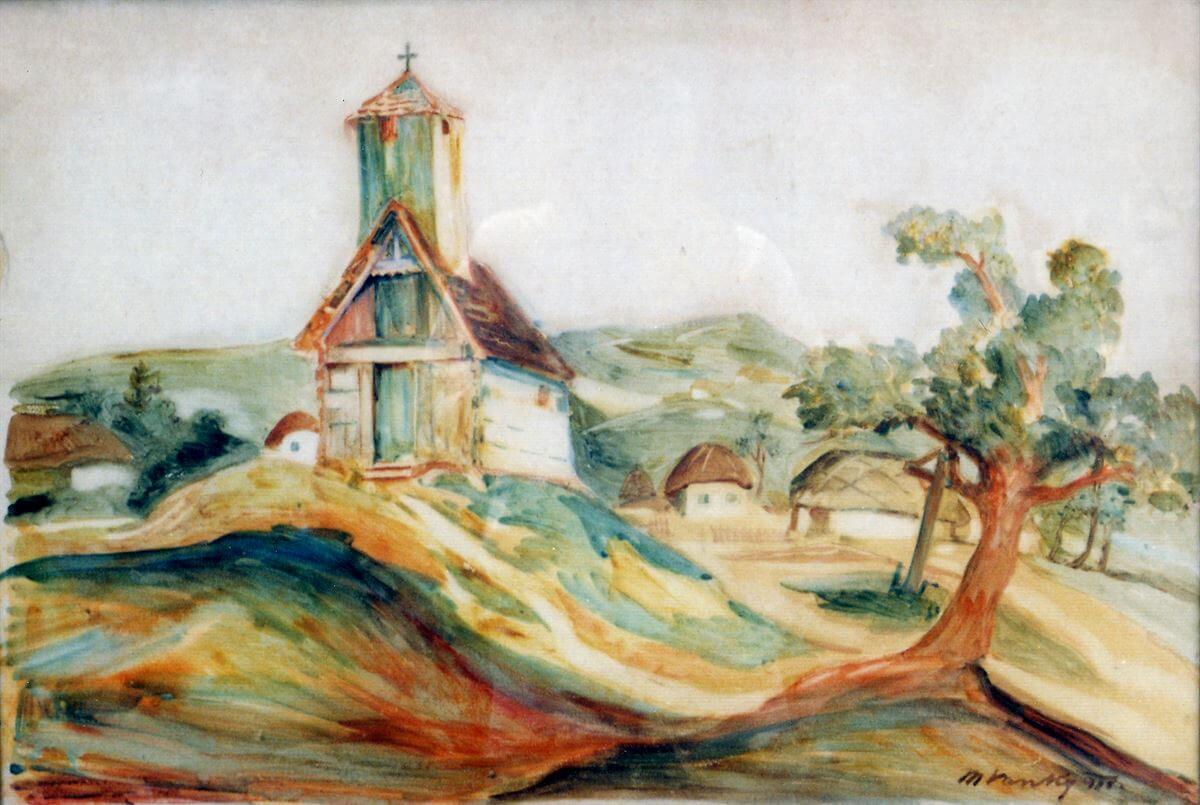The History of the Collection
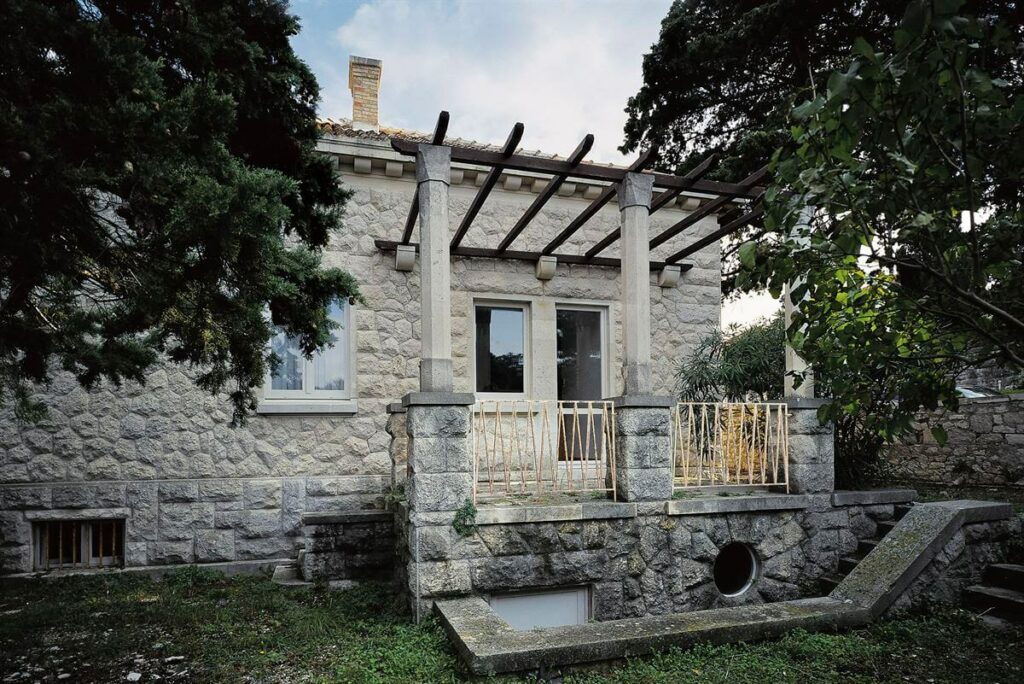
In a matter of months after her husband's death, Vanka's widow expressed an intention to donate part of the deceased's artistic legacy to an institution in his homeland, and to put the family real estate in the service of art. It would seem that the then Yugoslav Consul General in New York, Miroslav Kreačić, and his wife, Vanda b. Tompa, played a significant role in the ripening and final realization of this idea; both of whom, at the instigation of the painter Kamilo Tompa (who was also Mrs. Kreačić's paternal uncle), established cordial relations with the Vankas, whom they visited regularly at their White Bridge Farm in Pennsylvania, while the artist was still alive. In June 1963, Kreačić wrote to the Counsel of Education and Culture of the People's Republic of Croatia - Zagreb, to the administration of the Academy and to Matrix Croatica (Croatian: Matica hrvatska): “Recently, at the invitation of Vanka's wife, I examined the remaining paintings in his studio. Margaret Vanka is ready to donate several paintings to the atelier in Korčula or to the Gallery in Zagreb or to any other institution that I might suggest. She primarily considered donating three large canvases thematically related to Zagreb and Zagorje by subject matter and period of creation, but during the conversation she expressed her willingness to donate some other works from various periods of his life and creation, so that in this way, a cross section of his work as a whole would be preserved in his country.” However, we learn more details from, understandably, less discreet, private memoirs that Kreačić compiled for his descendants: “We visited them at the farm and Margaret asked us what to do with the large and one smaller house on Korčula and asked if there was a chance to reclaim those houses. As at that time there was no prospect of nationalized property being returned to its owners, I suggested that the large house be donated to the Yugoslav Academy of Sciences and Arts, as well as the collection of Maxo’s paintings for a permanent display. After a certain time, the Vanka family and the Academy in Zagreb came to an agreement, and a deed of gift was signed in our apartment in the presence of both parties.” From the aforementioned memorandum to several Croatian cultural institutions, it can be further surmised that the final selection of artwork was probably left up to a Yugoslav painter with temporary residence in the USA and that it was quite probably the Serbian painter and art historian, then manager of the Belgrade Modern Gallery, Miodrag Protić (1922 – 2014). Not even an entire month had passed, when the Academy sent a positive response, along with an added explanation that its Department of Fine Arts arrived at the conclusion that “the entire process should be headed in the direction of one house being intended for the Maksimilijan Vanka memorial museum, and the other serving as a painting studio in honour of Maksimilijan Vanka, and for the benefit of young artists”, and the Academy will “also with the deepest gratitude receive individual paintings from the legacy of M. Vanka as a gift, as they have been given to understand by the deceased’s widow”. Cvito Fisković, F.C.A., was entrusted with “bringing to fruition the ideas and wishes of Maksimilijan Vanka’s family in accordance with the local governing bodies of the Korčula People's Committee. What followed was an extremely complex operation stretching over a period as long as two years. In 1965, the Korčula City Council issued the Vanka's a title deed to the villas Stetten and Tusculum and the small yacht Pegica no. 136, with the profession that the interior of both buildings had been destroyed during the Second World War. In the spring of the following year, a Deed of Gift was signed, a donation agreement for the two properties, with clauses stipulating their intended uses. However, the undertaking was not completed before the transfer of ownership had been regulated in the summer of 1967. The revamping of the villa for the accommodation of the Collection included a complete adaptation of the edifice; inter alia, the conversion of three hitherto salons into exhibition halls.
In the meantime, in December 1963, the donated artworks were shipped to Rijeka in three crates. The crates were opened at the end of April next year, on the premises of the Zagreb Modern Gallery, where the artworks were also stored, having been assumed according to the list delivered from the New York Consulate General. Subsequently, five more envelopes with works on paper of smaller dimensions, as well as small sculptures and archival material, arrived from the Belgrade Modern Gallery, and the whole lot was added to the already stored part of the donation. In February 1968, a committee led by the members of the Academy Mohorovičić and Fisković selected around seventy artworks and part of the archival material for the display of the future Memorial Collection in the large Vanka villa. The rest of the donation – with the exception of the oil Still Life and the watercolour Old Man, both of which were assigned to the Modern Gallery in an agreement between the committee and the then director of that institution, Željko Grum – was returned to the Academy and handed over to the Strossmayer Gallery for storage. The collection was officially opened in May of that year, and the ceremony was attended by the donor with her daughter and son-in-law, as well as Vanda and Miroslav Kreačić, whose mandate in New York had by then already expired. Newspaper articles stated that only a small number of Vanka’s works were exhibited, but of the “highest quality”. They also conveyed the words of Stijepo Ivančević, the then director of the Korčula Town Museum, who was also entrusted with the management of the Academy’s Vanka Memorial Collection, that it “is not complete because the canvases with motifs of Korčula and South Dalmatia, which are scattered all over the country, are missing”. The catalogue published on the occasion includes only about twenty works of art – all ceramic objects, a dozen canvases and paintings on paper of larger dimensions – which represent almost all the creative sections represented in the collection.
hotspot
The donor Mrs. Margaret Stetten Vanka between Miroslav Kreačić, former consul general in New York, and Miroslav Karšulin, F.C.A., the Academy's then general secretary, at the ceremonial opening of the Vanka Memorial Collection in 1968 (Various Persons Fonds. Vanka, Maksimilijan, Croatian State Archives, HR-HDA-1801-258). Vanka's Self-Portraitcan be observed behind them.
hotspotovi
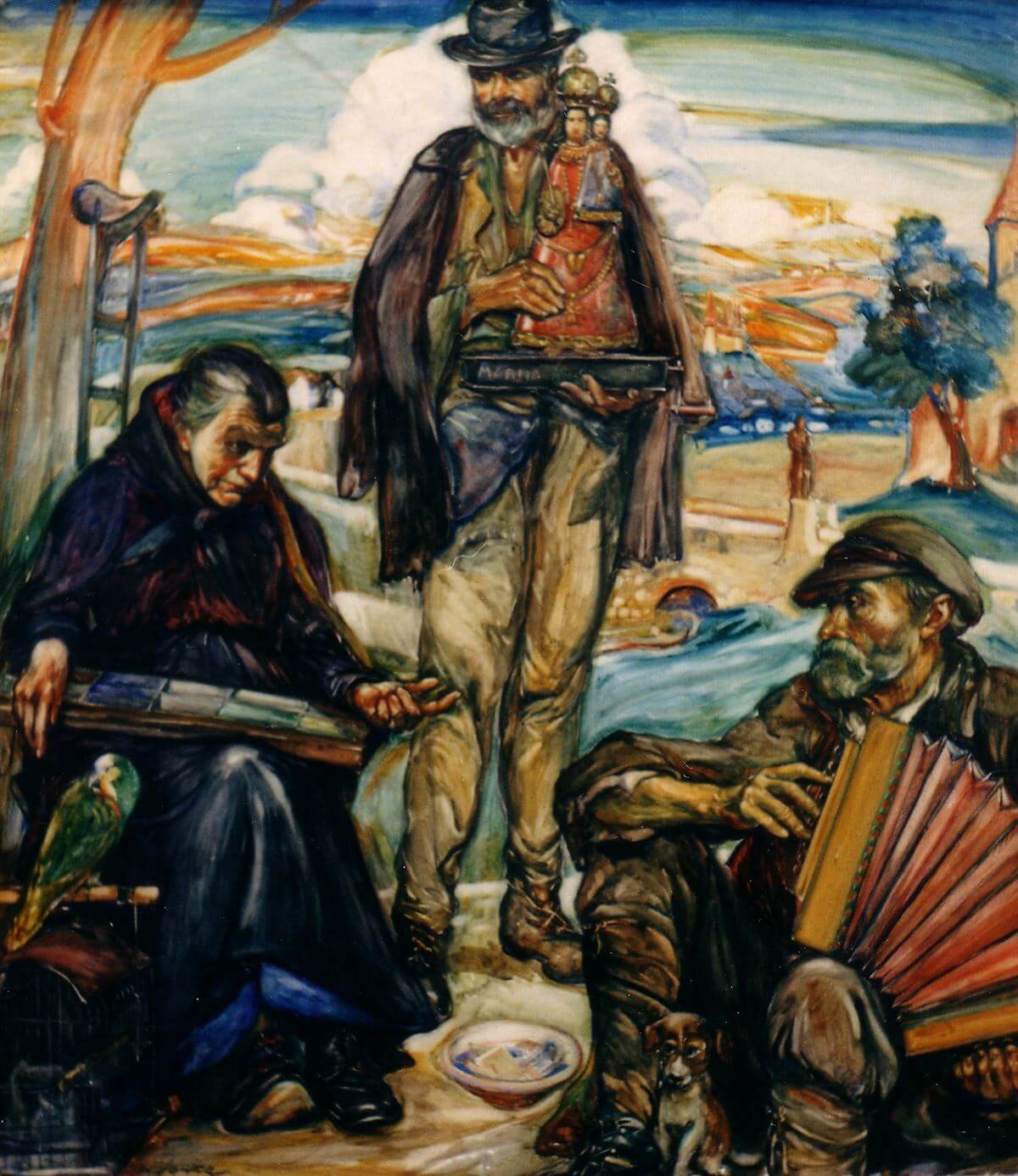
Junk Men, 1930, tempera on paper, on hardboard, 164.6 x 146 cm
(Maksimilijan Vanka Memorial Collection, inv. no. VA-6)
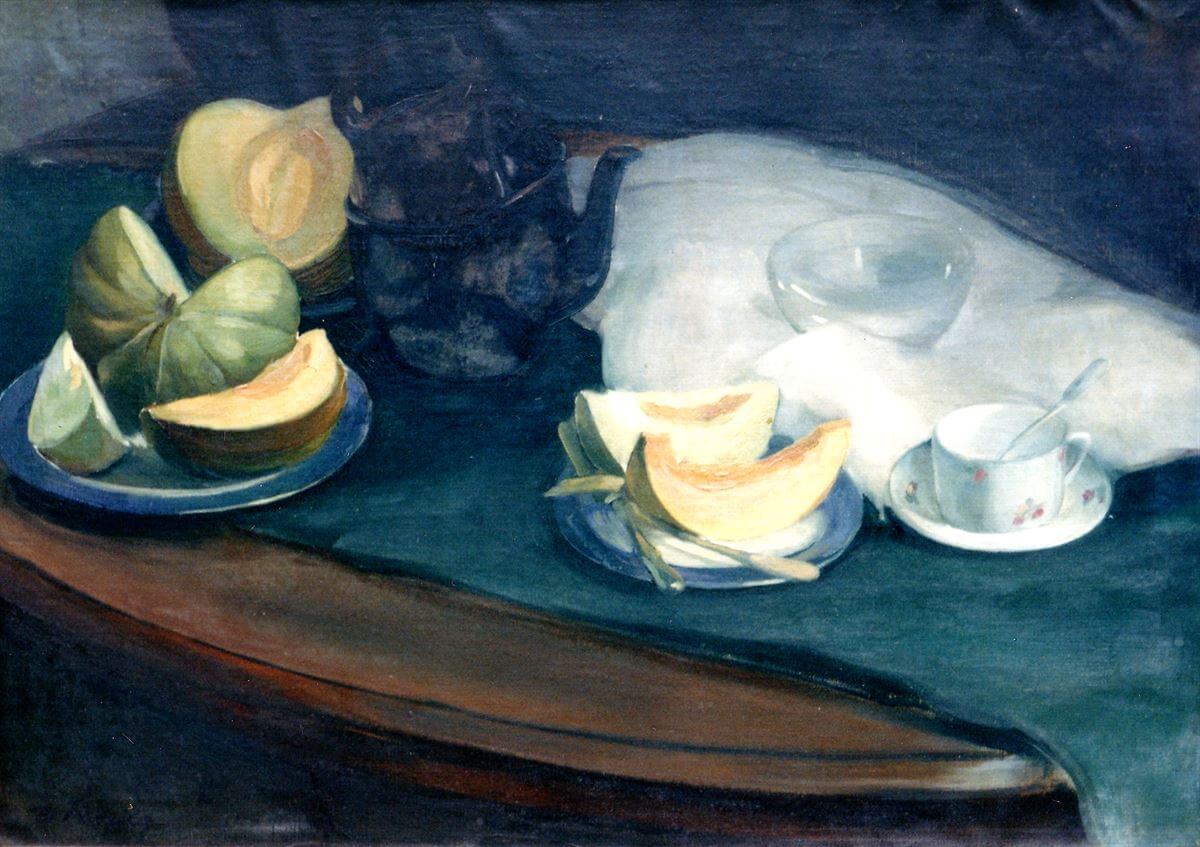
Still Life with Melons, 1930, oil on canvas, 62.3 x 86.3 cm
(Maksimilijan Vanka Memorial Collection, inv. no. VA-7)
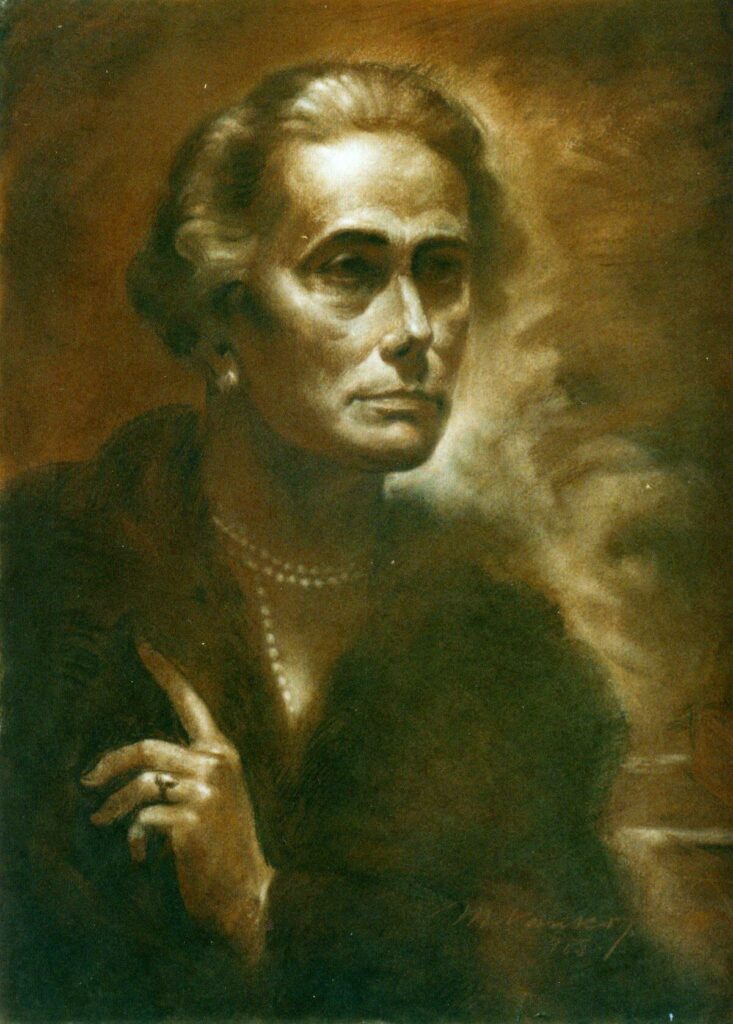
Portrait of a Woman with a String of Pearls, 1928, red chalk on paper, 64.8 x 50 cm
(Maksimilijan Vanka Memorial Collection, inv. no. VA-5)
Cvito Fisković, F.C.A., and the then manager of the Korčula Town Museum, Stijepo Ivančević, in the exhibition display, at the opening of the Collection in 1968 (Various Persons Fonds. Vanka, Maksimilijan, Croatian State Archives, HR-HDA-1801-258). Ivančević is standing in front of the painting Junk Men, and in the background, in another room, the exhibited works Still Life with Melons and A Portrait of a Woman with a String of Pearls can be glimpsed.
hotspotovi
The donor viewing the exhibition during the ceremonial opening of the Collection in 1968 (Various Persons Fonds. Vanka, Maksimilijan, Croatian State Archives, HR-HDA-1801-258). Mrs. Stetten Vanka standing in front of the watercolour Motif of Kupa near Petrinja.
hotspotovi
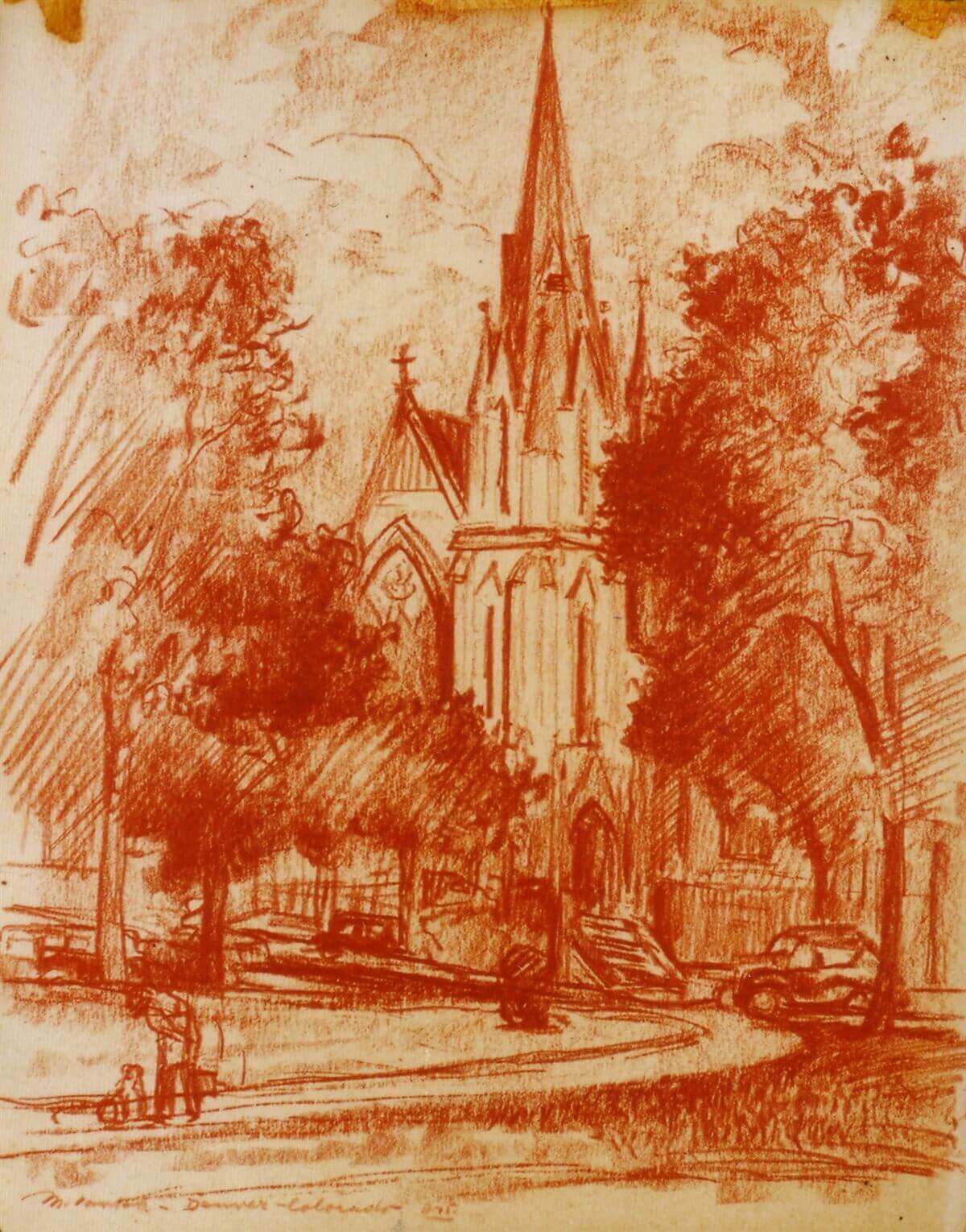
Sketch for the painting “Denver-Colorado”, 1945, red chalk on paper, 35.3 x 28.3 cm
(Maksimilijan Vanka Memorial Collection, inv. no. VA-65)
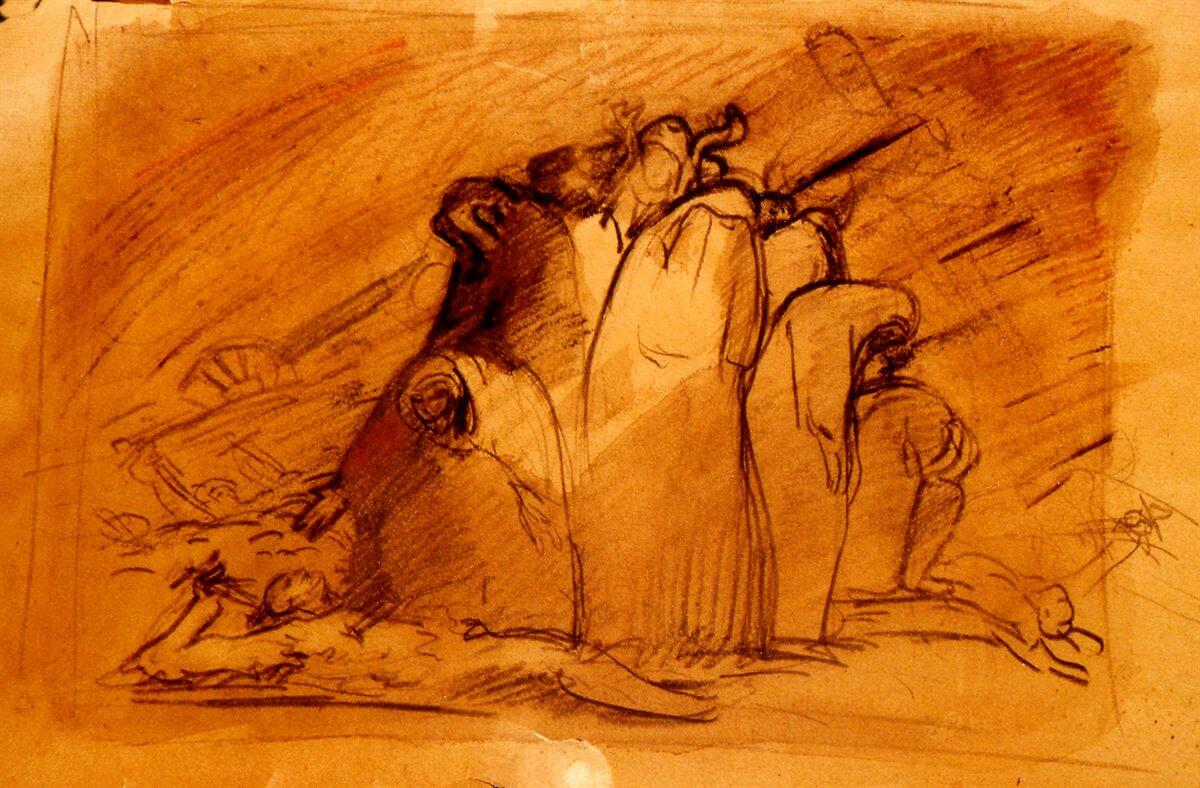
Widows after Battle, brown chalk on paper, 30.2 x 45.8 cm
(Maksimilijan Vanka Memorial Collection, inv. no. VA-62)
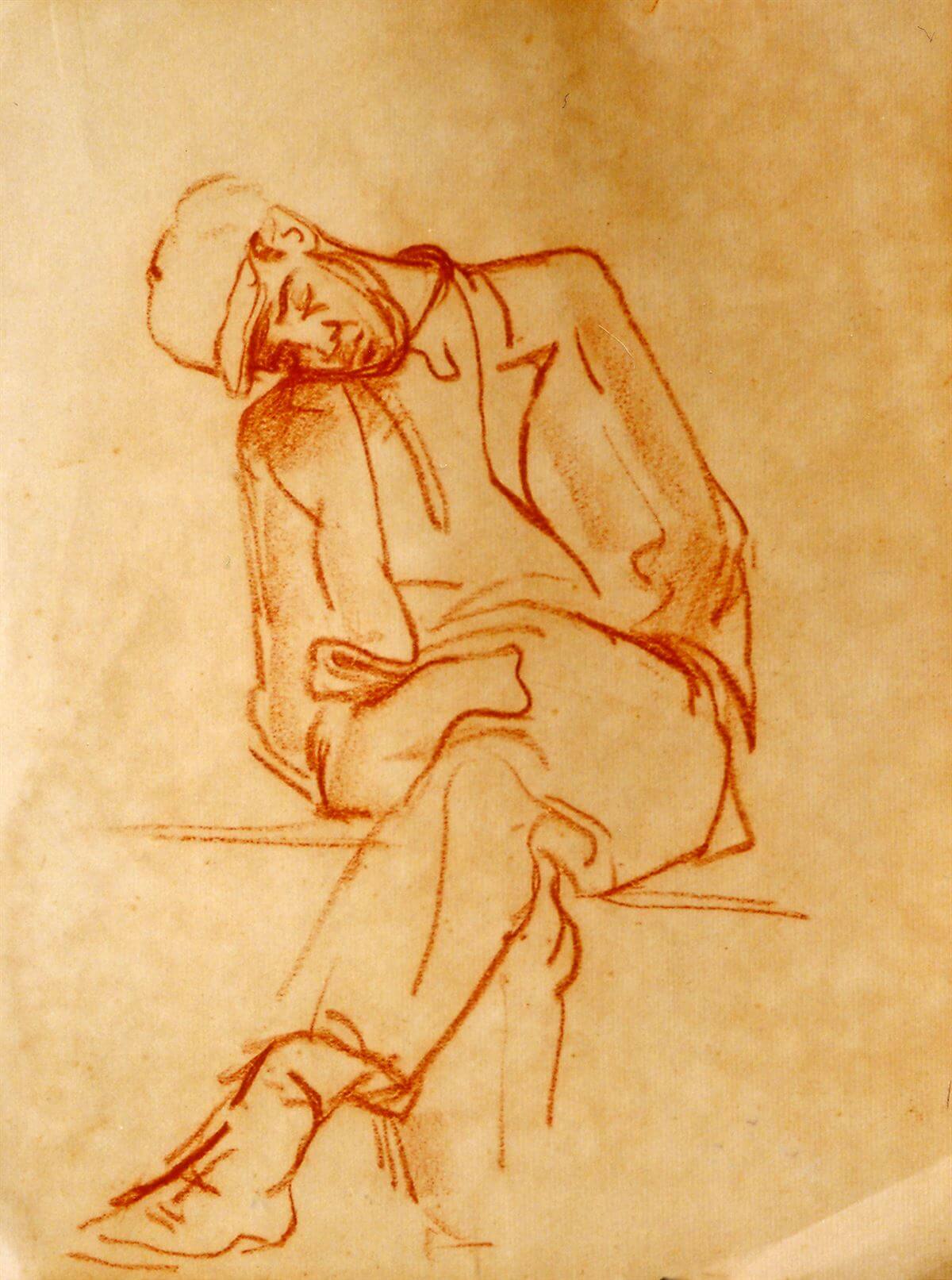
Young Man Sitting on a Bench Sleeping, brown chalk on paper, 30.2 x 22.5 cm
(Maksimilijan Vanka Memorial Collection, inv. no. VA-59)
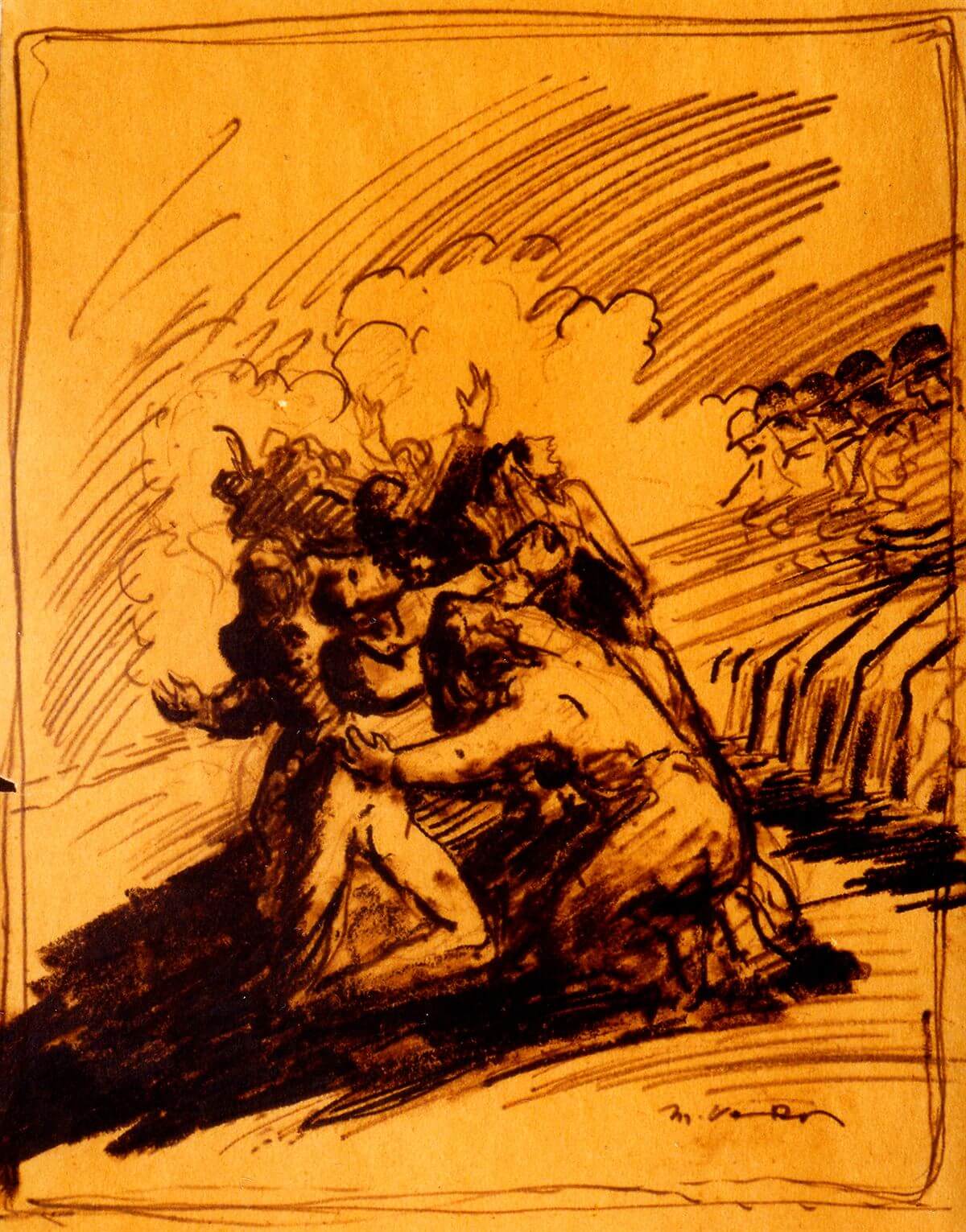
Execution by Firing Squad, brown chalk on paper, 45.5 x 30.3 cm
(Maksimilijan Vanka Memorial Collection, inv. no. VA-61)
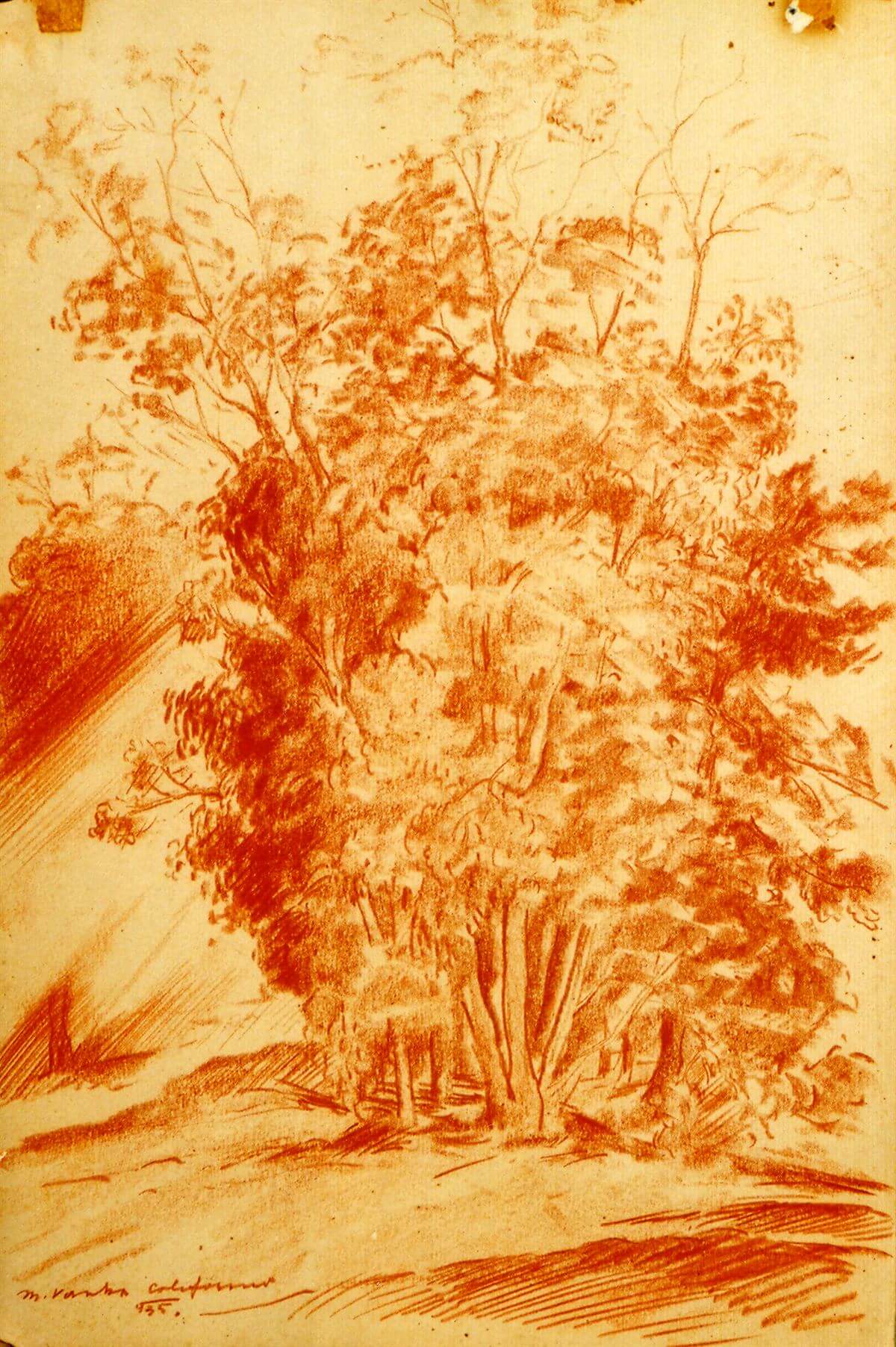
Landscape with a Grove, 1935, red chalk on paper, 45.8 x 30.4 cm
(Maksimilijan Vanka Memorial Collection, inv. no. VA-63)
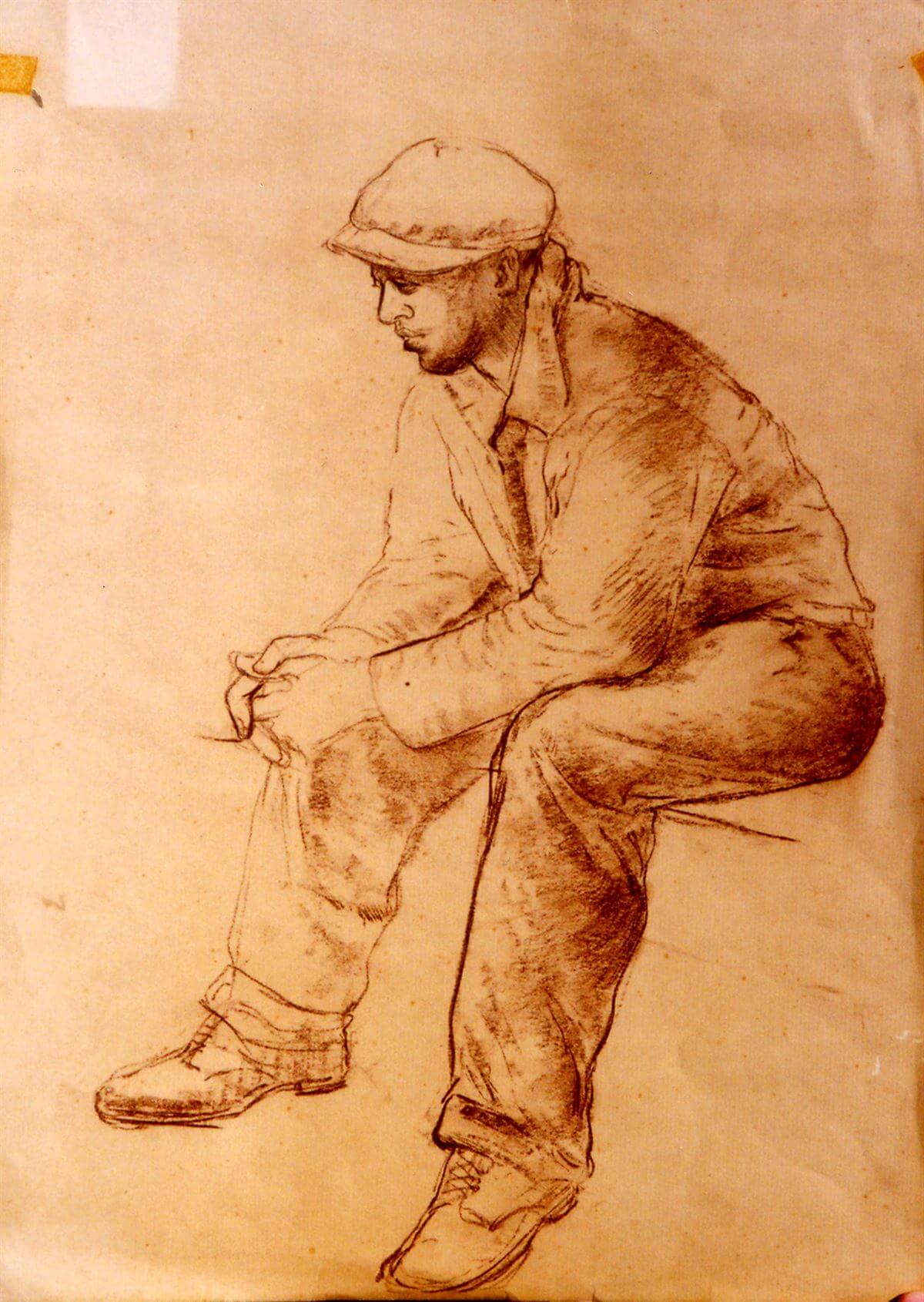
A Male Figure Sitting with His Hands Clasped, c. 1935, brown chalk on paper, 53.2 x 3.79 cm
(Maksimilijan Vanka Memorial Collection, inv. no. VA-64)
Part of the collection display, recorded at its ceremonial opening in 1968 (Various Persons Fonds. Vanka, Maksimilijan, Croatian State Archives, HR-HDA-1801-258). The following drawings are displayed in a glass cabinet: The sketch for the Painting “Denver-Colorado”, Widows after the Battle, Young Man Asleep Sitting on a Bench, Execution by Firing Squad, Landscape with a Grove, Male Figure Seated with Folded Hands.
ostatak sadržaja
It is interesting that barely a year after the opening of the Collection, the Academy received a request from Ivančević that the remaining artworks stored in the Strossmayer's Gallery be delivered to Korčula with the objective of altering the display. Some of them were sent to the local convent of Dominican nuns even earlier. From the correspondence between the manager of the Memorial Collection and the Academy's Administration, we also learn that, with the exception of the dozen drawings exhibited in the glass cabinets, the other drawings were at that time stored in a “folder in a closet in the small guest room”.
From the documents preserved in the Archives of the Strossmayer Gallery and among the registry holdings of the Academy, it can be inferred that with the passing of time, a series of difficulties arose in relation to the jurisdiction over the Collection and its financing, and that the villa required extensive renovation as early as the mid-1980s. Finally, in order to protect the artworks, the entire holdings were in 1988 moved to the neighbouring male Dominican Monastery of St. Nicholas. “In order to preserve part of the collection in better conditions than the current ones and to present it to the public”, several objects were given on temporary loan to the Municipal Court and the Korčula Town Museum four years later, with several artworks that were included in the agreement having already been exempted from the storage by the Dominicans and placed in the Museum. In 1995 “the superintendence of the processing and presentation of the collection” and “the supervision of the organization of its preservation” were entrusted to the Strossmayer Gallery of Old Masters. Three years later, preparations for the revitalization of the Collection ensued. All the artworks were photographed and measured, and their physical condition was assessed, and the works not satisfying the criteria for a permanent display were shipped to Zagreb. On that occasion, however, it was established that the number of artworks and documents received as part of the donation in 1964 did not match those that were finally at disposal before the new opening of the Collection three and a half decades later, and that due to inconsistently compiled lists and reverses following throughout that time numerous changes in the location of the Collection and its individual segments, it was not possible to determine when and how a part of the items was lost. They are still being searched for today. During the second reconstruction of the villa, the previous three exhibition halls were merged into a single space. We can evaluate the concept of the permanent exhibition, devised by the then manager of the Strossmayer Gallery, Đuro Vanđura, on the basis of the catalogue accompanying the reopening of the Collection in the summer of 1998. It is clear from it that the lobby and part of the side rooms were also used for exhibition. It is indubitable that all the works from the Collection on textile support and the majority of the paintings on paper were presented.
In the next twenty years, the Collection functioned in various forms of public-private management, with a subpar outcome for its fundamental purpose. The display was modified out of necessity; the artwork was, piece by piece, moved to Zagreb and, depending on the type of material, stored in the storage rooms of the Strossmayer Gallery and the The Department of Prints and Drawings. Since in the meantime the villa has also become quite dilapidated, in the summer of 2019 it was decided to proceed with another renovation, and a conceptual project for the object reconstruction was conceived, which will be realized in cooperation with the Town of Korčula. All the remaining artworks have been attended to in the Academy's premises in Zagreb, and in accordance with the plan of conservation works, according to the dynamics with which the necessary funds will be obtained, they will be subjected to appropriate interventions so that they will be ready for exhibition in the renovated Korčula building in their full glory.
